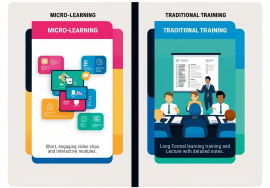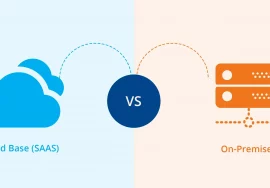
Digital Learning
The digital transformation of the workplace has revolutionized how organizations approach employee development. Traditional training methods are increasingly being supplemented or replaced by digital learning solutions that offer greater flexibility and accessibility. This shift not only meets the evolving needs of the modern workforce but also aligns with organizational goals of efficiency and scalability.
Understanding Digital Learning
Digital learning refers to the use of technology to deliver educational content and training. This includes a variety of formats such as online courses, webinars, virtual classrooms, and interactive modules. These methods facilitate continuous learning, allowing employees to acquire new skills and knowledge at their own pace and convenience.
Benefits of Digital Learning for Employees
- Flexibility and Accessibility: Digital learning platforms enable employees to access training materials at any time and from any location, accommodating diverse schedules and learning preferences.
- Personalized Learning Paths: Advanced e-learning systems can tailor content to meet individual employee needs, enhancing engagement and improving knowledge retention.
- Cost-Effectiveness: Implementing digital learning reduces the need for physical training materials and travel expenses, optimizing the organization’s training budget.
- Scalability: Digital platforms can easily expand to accommodate a growing workforce without incurring significant additional costs, making them ideal for organizations of all sizes.
Implementing Digital Learning in the Workplace
- Assess Training Needs: Begin by conducting a thorough analysis to identify existing skill gaps and determine the specific training requirements of your employees. This ensures that the digital learning program addresses the most pertinent areas for development.
- Select Appropriate Platforms: Choose e-learning platforms that offer relevant content, user-friendly interfaces, and the scalability to meet your organization’s current and future needs. Consider factors such as content variety, ease of integration, and user support when making your selection.
- Develop Engaging Content: Create interactive and multimedia-rich training materials to maintain learner interest and enhance knowledge retention. Incorporate videos, quizzes, and simulations to provide a dynamic learning experience.
- Encourage a Learning Culture: Promote the value of continuous learning within your organization to motivate employee participation. This can be achieved through leadership endorsement, providing incentives, and integrating learning objectives into performance evaluations.
- Monitor and Evaluate Progress: Utilize analytics tools to track employee engagement and assess the effectiveness of training programs. Regularly review this data to make informed adjustments and improvements to the learning initiatives.
Overcoming Challenges in Digital Learning
- Technical Issues: Ensure that your organization has robust IT support and infrastructure in place to address potential technical difficulties promptly. Providing training on how to use digital learning tools can also mitigate technical challenges.
- Employee Resistance: Some employees may be hesitant to adopt new learning methods. Provide clear communication about the benefits of digital learning and offer support to ease the transition. Highlight success stories and provide demonstrations to build confidence.
- Content Relevance: To keep employees engaged, it’s crucial to regularly update training materials to reflect current industry trends and organizational changes. Solicit feedback from employees to ensure the content remains relevant and valuable.
Embracing digital learning empowers employees to develop essential skills, fosters engagement, and drives organizational success. By implementing effective e-learning strategies, companies can create a dynamic and adaptable workforce ready to meet the challenges of the modern business environment







